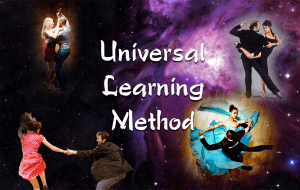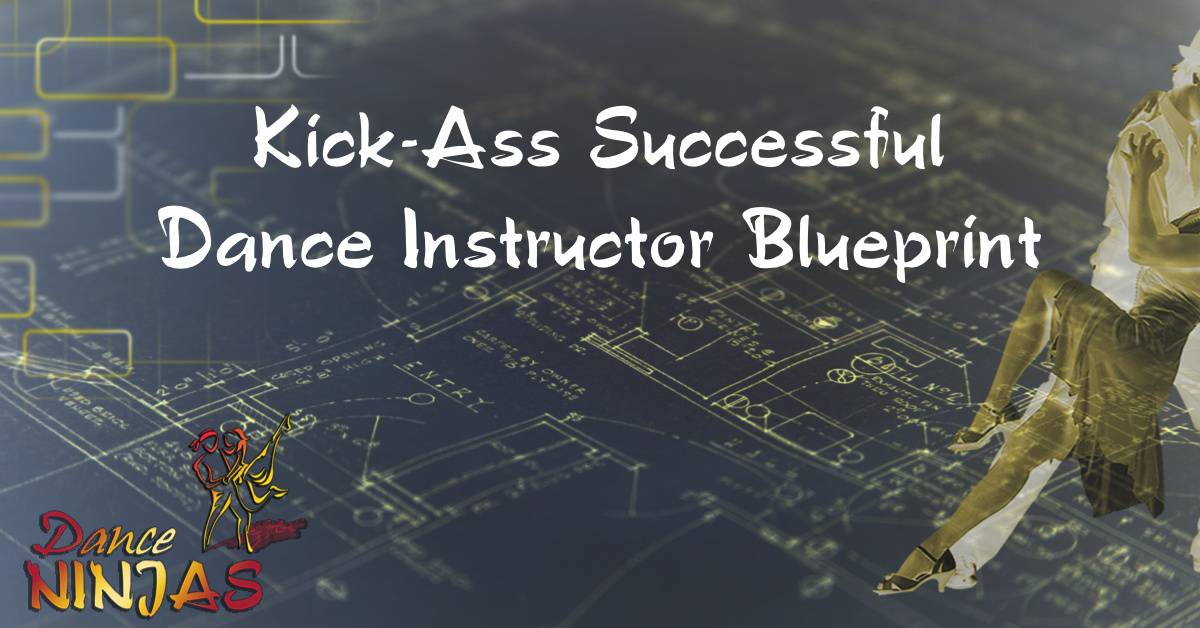This is Part 1 of a 4-part series on redeveloping techniques to be universal so your students have 100% verifiable proof that you are improving their dancing:
- Part 1 – [You Are Here] –Why A Universal Learning Method Is So Valuable For Your Teaching
- Part 2 – How To Turn Any Technique Into Your Own Universal Technique
- Part 3 – STOP Dancing On The Beat?
- Part 4 – Give Yourself The Advantage
To be an in-demand, sought-after, or even world-class dance instructor…
…it’s super important to:
- improve your students
AND - AND make sure they love your classes
But…
But how can you make sure you do BOTH during every single class you teach?
We are going to show you a very unique and powerful method…
BUT…
You might need to make some subtle changes to the way you teach.
Let’s start by getting into the mind of a dance student…
As a student, have you ever learned a dance technique that only works as long as the person you are dancing with uses a particular technique?
I’m sure you’ve noticed this happen plenty of times. (ex: when you learn about frame it becomes super important that your partner uses their frame in a particular way)
Isn’t it frustrating to learn a cool concept and then not be able to use it with some of the people you dance with?
Well, now you can change that and make every technique and concept work universally (aka: with everyone you and your students dance with)…
…by using Dance Ninjas Universal Learning Method.
This new learning/teaching method is a big part of why I’ve been hired to teach dance in over 231 cities across 35 countries, and it’s the exact same method that’s used to create all of the techniques taught in our online trainings…
…and now, for the first time ever, I’m sharing it so YOU can use it too!
This will be a game changer for your students.
Each time you teach a student how to use a technique with everyone…
…that previously they could only use with some people…
…you are showing them 100% verifiable PROOF that you are improving their dancing.
They couldn’t do something with some people before and now they can. That is proof that they’ve improved.
And guess what?
They will love you for that!
Of course, we will teach you HOW to do this but…
…first, I think a bit of the history might be helpful…
How The Universal Learning Method Was Created
Over the past 18 years, I have taken thousands of dance classes…
…and as much as I love taking all sorts of dance classes and they definitely improve my dancing…
I always wanted to find a way to use the techniques I was learning so they worked with everyone…
…and a lot of the time they were not presented in that way.
For example, when I learned about counterbalance, I was taught that I was supposed to lead it and my follow was supposed to follow it.
Seems normal enough, right?
But the problem was…
…some of my partners wouldn’t follow it when I wanted them to and others would automatically go into it when I never asked them to.
Can you relate?
Have you ever experienced a moment when your partner did something they weren’t supposed to do (or didn’t do something they were supposed to do)?
Not sure what counterbalance is? Watch the video below for a quick explanation and example.
I found this really frustrating and started getting annoyed when my partners did things they “weren’t supposed to”.
If my partners:
- ignored certain aspects of the music
- didn’t dance grounded
- had “bad” frame or even just a different type of frame
- didn’t bounce (or pulse) the way I learned
- had a very light (or heavy) lead/follow
- or did something different from what I was taught…
…in those cases, I didn’t know how to dance well with them and it was frustrating.
The more I danced with these people, the more annoying it got and eventually I started to avoid dancing with them (even though I used to enjoy dancing with some of them before I learned these certain ways to dance).
That’s crazy!
I don’t know about you, but I want to increase the amount of people I can have amazing dances with as I improve my dancing…not let that slowly dwindle.
I figured there had to be a way to learn these techniques that would increase my skills and increase my enjoyment with EVERYONE I encountered…
…and that is exactly why I started to search for…
A Universal Learning Method
(Little did I know, it was going to improve my dancing more than almost anything else I would learn in 18+ years of dancing and allow me to travel the world teaching dance.)
So I decided to take techniques that I was learning and figure out how to redevelop them so they improve my dancing with everyone, instead of just the people who know that technique.
And that is exactly what I want to share with you here…
Dance Ninjas Universal Learning Method
So let’s take the example of learning counterbalance and see how using the Universal Learning Method turned this cool concept into something I could use with everyone.
Want To Take The Fast Track?Everything we teach in Dance Ninjas uses the Universal Learning Method. If you want to save yourself the time of redeveloping hundreds of techniques so they work universally and instantly get a whole bunch of universal techniques to share with your students… |
Example: Counterbalance
Instead of learning that I was “supposed” to lead the counterbalance and my follow “needed” to follow it…
…I decided to learn that counterbalance was an awesome part of dancing that I could both lead and follow (regardless of whether or not I was the official lead or follow).
That way, if my partner didn’t have the knowledge, skill level, or desire to follow my counterbalance, it was no big deal because I would just separate that aspect out and follow their counterbalance while I was leading everything else.
To be able to do this, I had to learn to do any movement:
- with or without counterbalance
- with varying degrees of counterbalance
- with different directions of counterbalance
- at different speeds and durations
- in different positions
…and to be able to change any of this at any point during any move.
It seemed crazy hard at first, but it was actually pretty easy once I made it my focus.
And it created a totally different way of looking at counterbalance that I am constantly still improving and learning more about every day I dance.
Now, when I dance with people who don’t use counterbalance in one of the ways I was taught, instead of getting frustrated and having a mediocre dance…
…I get to learn more and improve my dance skills while I’m social dancing.
Do you see how different this is than the normal method of learning (and teaching) counterbalance?
Let’s put them side by side so you can see the exact difference in how you would teach with each method:
| Normal Method | Universal Method | |
| How You Teach Counterbalance | You teach a specific movement that either has counterbalance, doesn’t have counterbalance, or has counterbalance at a very specific moment(s). | You teach how to go in/out of counterbalance with different positions, speeds, directions, durations, etc and then practice adjusting to each partner in any moment of any move. |
and
Want to see the difference in how you might teach counterbalance with the normal learning method vs the universal learning method? Watch this video:
Unfortunately, if you use the Normal Learning Method to teach counterbalance, it is extremely likely your students will come across many social dancers who were taught to use counterbalance in a different way…
…and dancing with them will likely feel less than amazing (and sometimes downright “horrible”) if neither person knows how to adjust.
Of course, the more classes they take from other instructors with different styles, the more they will learn about the different ways to use counterbalance…
…but this could take several years to gain the knowledge you can give them in one hour, if you use the Universal Learning Method.
So give your students the advantage!
There are a lot of teachers out there teaching people to dance well some of the time.
Go above and beyond…
Be a teacher who teaches your students to dance well ALL OF THE TIME!
This is our unique method to have 100% verifiable proof that you improve your students and ensure they love your classes.
So how do we improve dancing all of the time?
To learn how we improve dancing universally (and how you can also do this for yourself), go on to Part 2 – How To Turn Any Technique Into Your Own Universal Technique.
…or if you want to save some time…
Take The Fast TrackEverything we teach in Dance Ninjas uses the Universal Learning Method. If you want to save yourself the time of redeveloping hundreds of techniques so they work universally and instantly get a whole bunch of universal techniques to share with your students… |
So…
Do you or will you use this in your classes?
Share your thoughts or questions in the comments below.



Thank you so much Andrew , as a matter of fact with the years I and changing my teaching style and dancing too of course Ithings begun to fit on place with the universal technique , happy to see it articulated and explained in detail to make it more present in my explanations and also as a supportive way of promoting the masterclasses. Thank you
Awesome, it is nice to know we are on the same page. I always appreciate meeting dancers of other styles that focus on teaching more universally!